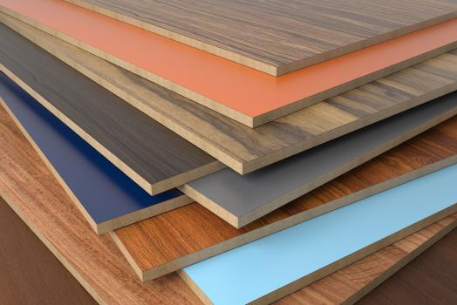- All
- Product Name
- Product Keyword
- Product Model
- Product Summary
- Product Description
- Multi Field Search
Views: 18 Author: Site Editor Publish Time: 2019-07-01 Origin: Site
There are brief descriptions of several lamination applications as follows. Also listed are the most common adhesives used in the various lamination applications. Adhesives play an absolute minimal part in the overall cost of the end product. Poor adhesive product selection plus lack of supplier support and knowledge will affect the bottom line faster than any difference in price. Arm yourself with information and work with an adhesive supplier that understands their product and will work to make your process repeatably successful.

Flat panel lamination
VAE – (Vinyl Acetate Ethylene) Sometimes called EVA, this is a water-based adhesive most used for lamination of vinyl. These can also be used for paper lamination if looking to consolidate products used.
PVA – (Polyvinyl Acetate) This water-based adhesive is primarily used for paper lamination.
Epoxy – (two-part system) Offers a destruct bond when miter folding is needed.
PURHM – (Polyurethane Reactive Hot Melt) 100% solids technology successfully used on a very wide range of substrates.
All these adhesives can be applied by roller to the board/base substrate or as a web coat (adhesive coating on the laminate material.) A few applications apply adhesive to both substrates.
Water-based adhesives may allow swelling of the wood fibers, grain raise, when applied directly to the board which can be aesthetically objectionable. This can be mitigated by adjustment of heat, rate of application or use of a web coater. As always, a higher quality board can reduce the chance of grain raise.
Epoxy will not cause grain raise however requires very precise handling of the recently bonded materials. Little to no movement of the product while the adhesive cures is required.
PURHM adhesives require heated delivery systems. As these are 100 percent solids, grain raise is eliminated. The variety of substrates that can be bonded with PURHM are wide plus the low application quantities required to create a watertight high-temperature resistant bond provide an extremely high-quality economical option.
A point to watch for in panel lamination is wrinkles created in the overlay during lamination of which the lay-flat of the overlay would be the likely culprit. This can be solved by brake tension, adjustment of the spreader roller, web heat to relax the film or combination of these.
As well, effective surface cleaning is an essential step in the production of high-quality products. The substrates, machine and the adhesive must be kept free of dust and debris as customers are not going to pay for laminated parts with contamination under the laminate material. These not only look bad they could also create adhesion issues. This can be addressed utilizing a panel brush cleaner, web vacuum, low static adhesive rollers and or compressed air.

3D lamination
PUD - (Polyurethane Dispersion) is a water-based adhesive system that is catalyzed for best performance and spray applied. The PUD is sprayed on the base/core substrate, left to dry, and a short time later reactivated with heat.
PUDs are used in either vacuum or membrane pressing. Vacuum pressing is done by heating the overlay and then creating bottom vacuum pressure to form the laminate material over the part. The heat and vacuum pressure create intimate contact between the part and laminate material that then activates the adhesive. Once the process is complete the part is trimmed and ready to process further.
During the membrane process, the membrane is heated by an upper platen, the overlay will be drawn to the membrane to be softened by heating. Then vacuum and upper positive pressure are applied causing the membrane and overlay to form around the parts. This process ensures heat to all sides and contours within the part to ensure proper activation of the adhesive. Running a membrane press is an art. Proper machine and adhesive selection along with working with a supplier with a longstanding knowledge of the process are keys to success.
Poor bond at the lowest edges of a part is a common issue. Cures might include adjusting the membrane temperature, moderating the press cycle, slightly higher application quantity of PUD adhesive or a combination. Parts in a press will need bottom support from pedestals or pins for laminate material to be applied on all appropriate areas. Common pedestals should be 1/2 inch smaller all around the part being pressed for proper product support so as to not break the corners. PUD adhesive must be applied to see a minimum 50 percent sheen on the edges of parts once dry to achieve proper bonding.